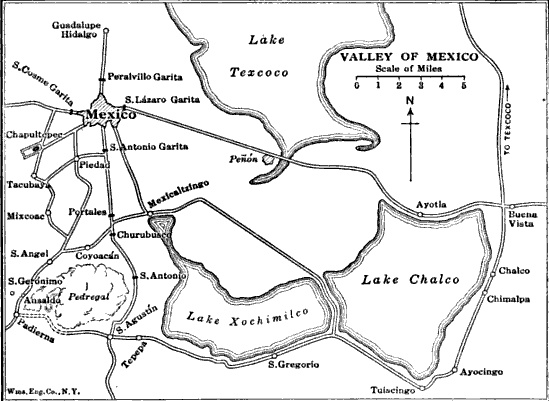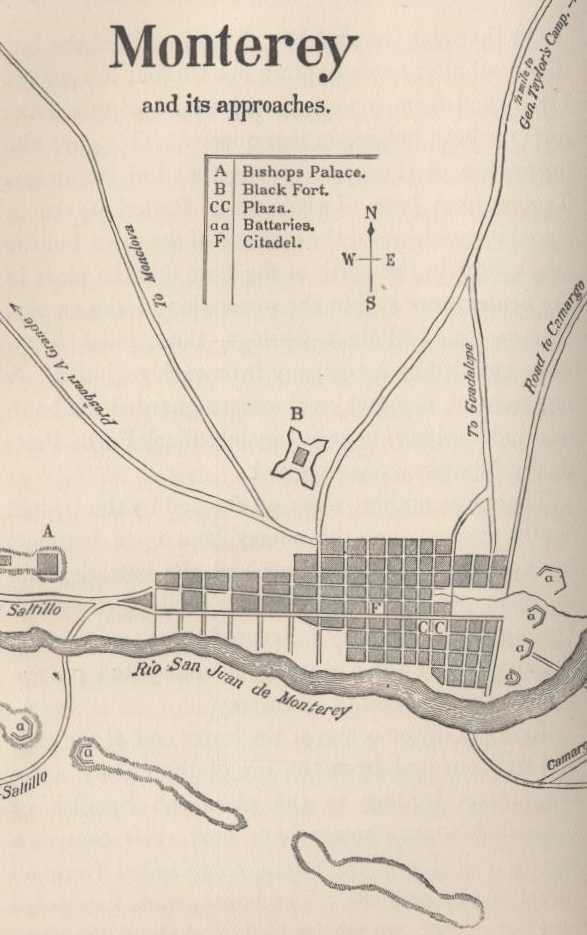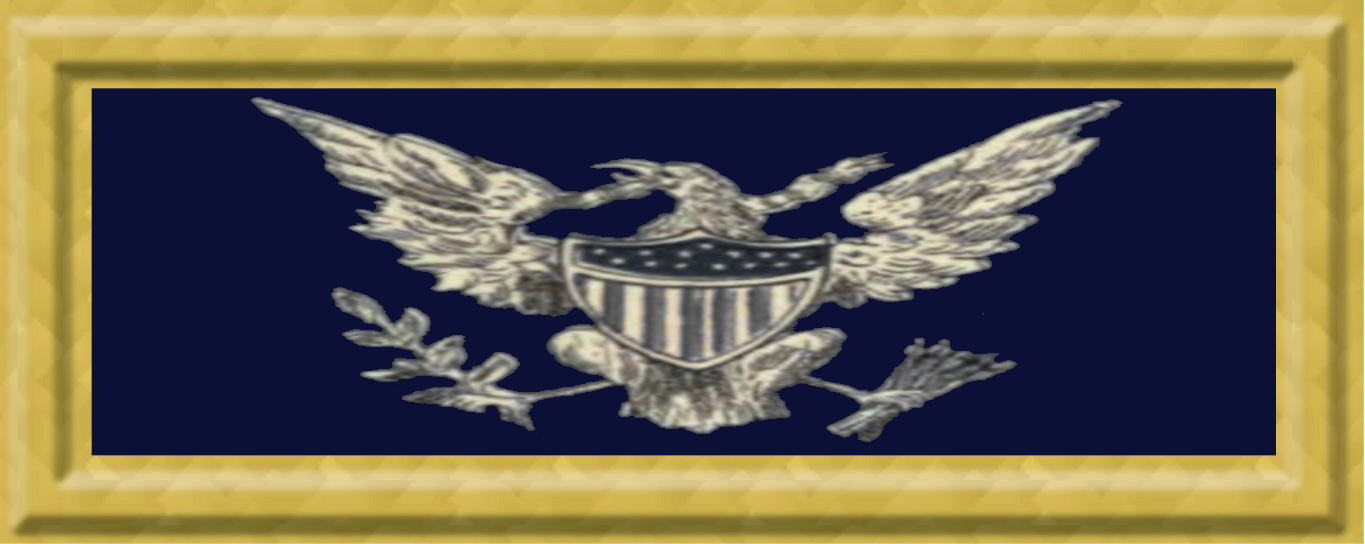|
Battle Of Churubusco
The Battle of Churubusco took place on August 20, 1847, while Santa Anna's army was in retreat from the Battle of Contreras or Battle of Padierna during the Mexican–American War. It was the battle where the San Patricio Battalion, made up largely of US deserters, made their last stand against U.S. forces. The U.S. Army was victorious, outnumbering more than six-to-one the defending Mexican troops. After the battle, the U.S. Army was only 5 miles (8 km) away from Mexico City. 50 Saint Patrick's Battalion members were officially executed by the U.S. Army, all but two by hanging. Collectively, this was the largest mass execution in United States history. Background Following their defeats at Contreras, Antonio López de Santa Anna ordered Major General Nicolás Bravo Rueda with the Army of the Center, to retreat from San Antonio to Churubusco.Bauer, K.J., 1974, ''The Mexican War, 1846-1848'', New York:Macmillan, Santa Anna also ordered Major General Manuel Rincón t ... [...More Info...] [...Related Items...] OR: [Wikipedia] [Google] [Baidu] [Amazon] |
Nathaniel Currier
Nathaniel Currier (March 27, 1813 – November 20, 1888) was an American lithography, lithographer. He headed the company Currier and Ives, Currier & Ives with James Ives. Early life and education Currier was born in Roxbury, Massachusetts, to Nathaniel and Hannah Currier. He attended public school until age fifteen, when he was apprenticed to the Boston printing firm of Pendleton's Lithography, William and John Pendleton. Career The Pendletons were the first successful lithographers in the United States, lithography having only recently been invented in Europe. Currier learned the process in their shop. In 1833, he subsequently went to work for M. E. D. Brown in Philadelphia, in 1833. The following year, in 1834, Currier moved to New York City, where he intended to start a new business with John Pendleton but Pendleton backed out, and the new firm became Currier & Stodart and lasted only one year. Currier & Ives In 1835, Currier started his own lithographic business as an epo ... [...More Info...] [...Related Items...] OR: [Wikipedia] [Google] [Baidu] [Amazon] |
Saint Patrick's Battalion
The Saint Patrick's Battalion (), later reorganized as the Foreign Legion of Patricios, was a Mexican Army unit which fought against the United States in the Mexican–American War. Consisting of several hundred mostly Irish and other Catholic European expatriates and immigrants, including numerous men who had deserted or defected from the United States Army, the battalion was formed and led by Irishman John Riley. It served as an artillery unit for much of the war, and despite later being formally designated as an infantry unit of two companies, the battalion continued to operate artillery pieces throughout the conflict. The participated in many of the bloodiest battles during the American invasion of Mexico, with Ulysses S. Grant remarking that " Churubusco proved to be about the severest battle fought in the valley of Mexico". Composed primarily of Irish immigrants, the battalion also included German, Canadian, English, French, Italian, Polish, Scottish, Spanish, Swiss ... [...More Info...] [...Related Items...] OR: [Wikipedia] [Google] [Baidu] [Amazon] |
John Garland (general)
John Garland (November 15, 1793June 5, 1861) was an American general in the Regular Army who had a long and distinguished career spanning fifty years of service during the War of 1812, Seminole Wars, Mexican–American War, Utah War and very briefly into the American Civil War. Early life and career Garland was born in Virginia to Hudson Martin and Elizabeth Penn (''née'' Phillips) Garland. His mother was the grandniece of William Penn. One of his brothers was James Garland. He joined the U.S. Army during the War of 1812 and by 1813 was a first lieutenant. He served throughout the war in the 35th Infantry and was transferred to the 3rd Infantry at the war's close. He stayed in the army serving in the quartermaster's department. He fought under General William J. Worth in the Seminole Wars in northern and central Florida. Mexico Northern Mexico Garland was promoted to lieutenant colonel of the 4th U.S. Infantry on May 7, 1839. He fought under Zachary Taylor at the battles ... [...More Info...] [...Related Items...] OR: [Wikipedia] [Google] [Baidu] [Amazon] |
Colonel
Colonel ( ; abbreviated as Col., Col, or COL) is a senior military Officer (armed forces), officer rank used in many countries. It is also used in some police forces and paramilitary organizations. In the 17th, 18th, and 19th centuries, a colonel was typically in charge of a regiment in an army. Modern usage varies greatly, and in some cases, the term is used as an Colonel (title), honorific title that may have no direct relationship to military. In some smaller military forces, such as those of Monaco or the Holy See, Vatican, colonel is the highest Military rank, rank. Equivalent naval ranks may be called Captain (naval), captain or ship-of-the-line captain. In the Commonwealth of Nations, Commonwealth's air force ranking system, the equivalent rank is group captain. History and origins By the end of the late medieval period, a group of "companies" was referred to as a "column" of an army. According to Raymond Oliver, , the Spanish began explicitly reorganizing part of thei ... [...More Info...] [...Related Items...] OR: [Wikipedia] [Google] [Baidu] [Amazon] |
Lava Field
A lava field, sometimes called a lava bed, is a large, mostly flat area of lava flows. Such features are generally composed of highly fluid basalt lava, and can extend for tens or hundreds of kilometers across the underlying terrain. Morphology and structure The final morphology of a lava field can reveal properties such as internal structure, composition, and mechanics of the lava flow when it was fluid. The ridges and patterns on top of the lava field show the direction of the lava channels and the often active lava tubes that may be underneath the solidified "crust." It can also reveal whether the lava flow can be classified as pāhoehoe or 'a'ā. The two main types of lava field structures are defined as sheet flow lava and pillow lava. Sheet flow lava appears like a wrinkled or folded sheet, while pillow lava is bulbous, and often looks like a pile of pillows atop one another. An important aspect of lava flow morphology is a phenomenon known as lava flow inflati ... [...More Info...] [...Related Items...] OR: [Wikipedia] [Google] [Baidu] [Amazon] |
Battalion
A battalion is a military unit, typically consisting of up to one thousand soldiers. A battalion is commanded by a lieutenant colonel and subdivided into several Company (military unit), companies, each typically commanded by a Major (rank), major or a Captain (armed forces), captain. The typical battalion is built from three operational companies, one weapons company and one headquarters company. In some countries, battalions are exclusively infantry, while in others battalions are unit-level organizations. The word ''battalion'' has its origins in the Late Latin word ''battalion'', which is derived from ''battalia'', meaning "battle" or "combat." The term was used to describe a large group of soldiers ready for battle. Over time, its meaning evolved in military terminology. The word "battalion" came into the English language in the 16th century from the French language, French , meaning "battle squadron" (similar to the Italian language, Italian meaning the same thing) and ... [...More Info...] [...Related Items...] OR: [Wikipedia] [Google] [Baidu] [Amazon] |
Charles Ferguson Smith
Charles Ferguson Smith (April 24, 1807April 25, 1862) was an American military officer who served in the United States Army during the Mexican–American War and the Utah War. He served as a Union Army major general during the American Civil War. He served as commandant of cadets of the United States Military Academy from 1838 to 1843. During the American Civil War, he served in the Army of the Tennessee under Ulysses S. Grant, who was a student of his at the military academy. Smith was instrumental in Grant's victory at the Battle of Fort Donelson but died in April 1862 due to infection of a non-combat leg injury and subsequent dysentery. Early life and education Smith was born on April 24, 1807, in Philadelphia, Pennsylvania, to Samuel B. Smith and Margaret Ferguson. His paternal grandfather was the Presbyterian church minister John Blair Smith. He graduated from the United States Military Academy in 1825. Career He was commissioned second lieutenant and assigned to t ... [...More Info...] [...Related Items...] OR: [Wikipedia] [Google] [Baidu] [Amazon] |
Brigade
A brigade is a major tactical military unit, military formation that typically comprises three to six battalions plus supporting elements. It is roughly equivalent to an enlarged or reinforced regiment. Two or more brigades may constitute a Division (military), division. Brigades formed into divisions are usually infantry or armored (sometimes referred to as combined arms brigades). In addition to combat units, they may include combat support units or sub-units, such as artillery and engineers, and logistic units. Historically, such brigades have been called brigade-groups. On operations, a brigade may comprise both organic elements and attached elements, including some temporarily attached for a specific task. Brigades may also be specialized and comprise battalions of a single branch, for example cavalry, mechanized, armored, artillery, air defence, aviation, engineers, signals or logistic. Some brigades are classified as independent or separate and operate independentl ... [...More Info...] [...Related Items...] OR: [Wikipedia] [Google] [Baidu] [Amazon] |
Newman S
Newman is a surname of Germanic Anglo-Saxon origins. Newman is the modern English form of the name used in Great Britain and among people of British ancestry around the world (as is 'Numan'), while Neumann (with variant spellings) is used in Germany, Switzerland, and Austria, and to some degree in Netherlands and Belgium. Both have their its origins in the pre-7th-century (Old English) word '' neowe'' meaning "new", with ''mann'', meaning man. Its first recorded uses were Godwin Nieweman in Oxfordshire, England, in 1169, and in Germany, Herman Nyeman of Barth in 1325. It was mostly likely originally used as a nickname for a recent arrival or settler. Related surnames include Neuman, Naumann(s), Numan, Nauman, and Neiman. The surname Newman is widespread in the core Anglosphere. A list follows of notable people with the surname. A *Abram Newman (1736–1799), British grocer *Adrian Newman (other), multiple people *Al Newman (born 1960), American baseball player *Ala ... [...More Info...] [...Related Items...] OR: [Wikipedia] [Google] [Baidu] [Amazon] |
William J
William is a masculine given name of Germanic origin. It became popular in England after the Norman conquest in 1066,All Things William"Meaning & Origin of the Name"/ref> and remained so throughout the Middle Ages and into the modern era. It is sometimes abbreviated "Wm." Shortened familiar versions in English include Will or Wil, Wills, Willy, Willie, Bill, Billie, and Billy. A common Irish form is Liam. Scottish diminutives include Wull, Willie or Wullie (as in Oor Wullie). Female forms include Willa, Willemina, Wilma and Wilhelmina. Etymology William is related to the German given name ''Wilhelm''. Both ultimately descend from Proto-Germanic ''*Wiljahelmaz'', with a direct cognate also in the Old Norse name ''Vilhjalmr'' and a West Germanic borrowing into Medieval Latin ''Willelmus''. The Proto-Germanic name is a compound of *''wiljô'' "will, wish, desire" and *''helmaz'' "helm, helmet".Hanks, Hardcastle and Hodges, ''Oxford Dictionary of First Names'', Oxf ... [...More Info...] [...Related Items...] OR: [Wikipedia] [Google] [Baidu] [Amazon] |
Coyoacán
Coyoacán ( ; , Otomi: ) is a borough (''demarcación territorial'') in Mexico City. The former village is now the borough's "historic center". The name comes from Nahuatl and most likely means "place of coyotes", when the Aztecs named a pre-Hispanic village on the southern shore of Lake Texcoco dominated by the Tepanec people. Against Aztec domination, these people allied with the Spanish, who used the area as a headquarters during the Spanish conquest of the Aztec Empire and made it the first capital of New Spain between 1521 and 1523. The village and later municipality of Coyoacán remained independent of Mexico City through the colonial period into the 19th century. In 1857, the area was incorporated into the then Federal District when this district was expanded. In 1928, the borough was created when the Federal District was divided into sixteen boroughs. The urban expansion of Mexico City reached the borough in the mid-20th century, turning farms, former lakes, and for ... [...More Info...] [...Related Items...] OR: [Wikipedia] [Google] [Baidu] [Amazon] |



